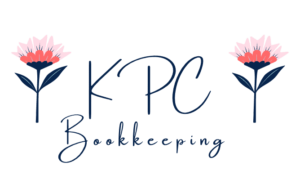Hey there, fellow female business owners! Today I want to talk to you about the dreaded B word: Budgeting. It’s something not many people look forward to (you can’t all be freaks like me), because it can feel very restrictive, even demoralizing. Think of it instead like a spending plan. My business bestie, financial coach Michelle Lucas, calls it a Yes Plan. You’re choosing what to spend your money on rather than what’s “not allowed.” It’s about choices, and we love those, don’t we ladies?
So here’s how to do it:
1. Know Your Numbers
The first step in creating a budget for your small business is to get a clear understanding of your financial situation. Take a deep dive into your revenue, expenses, and cash flow over the past months or years. Look at your sales figures, operating costs, overhead expenses, and any other financial metrics relevant to your business. Understanding your numbers will provide a solid foundation for building an accurate and realistic budget.
2. Set Goals Based on More than Money
Next, it’s time to define your financial goals for the coming months or year. Are you looking to increase revenue, reduce expenses, or invest in growth opportunities? Setting clear, measurable goals will guide your budgeting decisions and help you prioritize spending to align with your business objectives. Whether it’s boosting sales, expanding your product line, or improving profitability, make sure your budget reflects your aspirations and ambitions. Not someone else’s for you, or someone else in your industry. It’s tempting to want to base this solely on the money you want to make (we’re talking financial abundance, here), but remember to build in some wiggle room so you can have the kind of personal life you want to have, too.
3. Break It Down
Budgeting can feel overwhelming if you try to tackle it all at once. Break down your budget into manageable categories, such as sales, marketing, operations, and administrative expenses. Allocate funds to each category based on your historical data, industry benchmarks, and future projections. Be realistic but also flexible – your budget should be a living document that evolves as your business grows and circumstances change.
4. Plan for the Unexpected
In the world of entrepreneurship, surprises are bound to happen. Whether it’s unexpected expenses, fluctuations in demand, or economic uncertainties, it’s essential to build flexibility into your budget to accommodate the unexpected. Set aside a contingency fund or buffer to cover unforeseen expenses and mitigate financial risks. By planning for the unexpected, you’ll be better equipped to weather challenges and stay on track with your financial goals.
Quick tip: it might feel daunting to build an emergency fund, so dedicate a small percentage of your gross revenue to build it up slowly – it doesn’t have to be overnight!
5. Monitor and Adjust
Creating a budget is just the beginning – the real magic happens when you put your plan into action and monitor your progress regularly. Keep a close eye on your financial performance, compare actual results to your budgeted figures, and identify any variances or discrepancies. Adjust your budget as needed to reflect changes in your business environment, market conditions, or strategic priorities. By staying proactive and adaptive, you’ll ensure your budget remains relevant and effective over time.
Creating a budget for your small business doesn’t have to be daunting. In fact, with the right approach, it can be empowering and even a little bit fun! Okay, again, maybe not as fun for you as it is for me, but it’s fundamental tool for success. By knowing your numbers, setting clear goals, breaking down your budget, planning for the unexpected, and monitoring and adjusting regularly, you’ll be well-equipped to create a budget that sets your small business up for growth and prosperity.
So, don’t let budgeting intimidate you – embrace it as a powerful tool for shaping the financial future of your business. With a little bit of planning and a whole lot of determination, you’ve got this!
Here’s to smart budgeting and business success!
